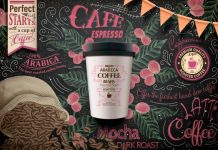Not only medical masks but also antiseptics have disappeared from the shelves of pharmacies and shops. The World Health Organization has released a step-by-step guide on making a truly effective antiseptic at home that will protect against viruses and bacteria. In addition to alcohol, you will need glycerin and hydrogen peroxide.
To make an antiseptic at home, you will need a glass or plastic container with a screw cap, beakers with a clear indication of milliliters, and a plastic or glass bottle with a tight lid or spray bottle.
Ingredients for the antiseptic; ethanol 96% or isopropyl alcohol 99.8%, glycerin 98% and hydrogen peroxide 3%, chilled boiled water or sterile distilled water. You can also add any non-toxic colorant (to distinguish the antiseptic from other fluids you have) and any other ingredient that is not harmful if swallowed (for example, a few drops of any essential oil).
Read also: In The Fight Against Covid-19: Where To Get Vitamins D, C And Zinc
Recipe number 1
- Ethanol 96%: 1667 ml.
- Hydrogen peroxide 3%: 83 ml.
- Glycerin 98%: 29 ml.
Recipe number 2
- Isopropyl alcohol, 99.8%: 1503 ml.
- Hydrogen peroxide 3%: 83 ml.
- Glycerin 98%: 29 ml.

How to make an antiseptic
- We take a glass or plastic bottle with a volume of 2 liters.
- Pour alcohol into a container up to the graduated mark (ethanol - 1667 ml, isopropyl alcohol - 1503 ml).
- Add 29 ml of glycerin.
- Add 83 ml of hydrogen peroxide using a beaker.
- Then add sterile distilled or cooled boiled water to the container to a volume of 2 liters.
- To prevent evaporation of the antiseptic, the container should be immediately closed with a lid or screw cap.
- Stir the solution by shaking lightly if possible or using a wooden spatula.
- Pour the antiseptic immediately into containers for the final product (for example, 500 ml or 100 ml plastic bottles).
- Quarantine vials for 72 hours before use. This will give time to destroy the spore forms of microorganisms present in the ingredients or newly used vials.
Also read: How to Disinfect Your Hands Effectively
Glycerin in antiseptic is used as a skin moisturizer. Hydrogen peroxide deactivates microbial spores that may be in solution. Any other additives, such as essential oil, must be of good quality and not hazardous if accidentally swallowed. To distinguish it from other liquids, a non-toxic dye may be added to the antiseptic. However, fragrances are not recommended due to the risk of allergic reactions.
Adapted and translated by The Cop Cart Staff
Sources: Today Lifestyle







